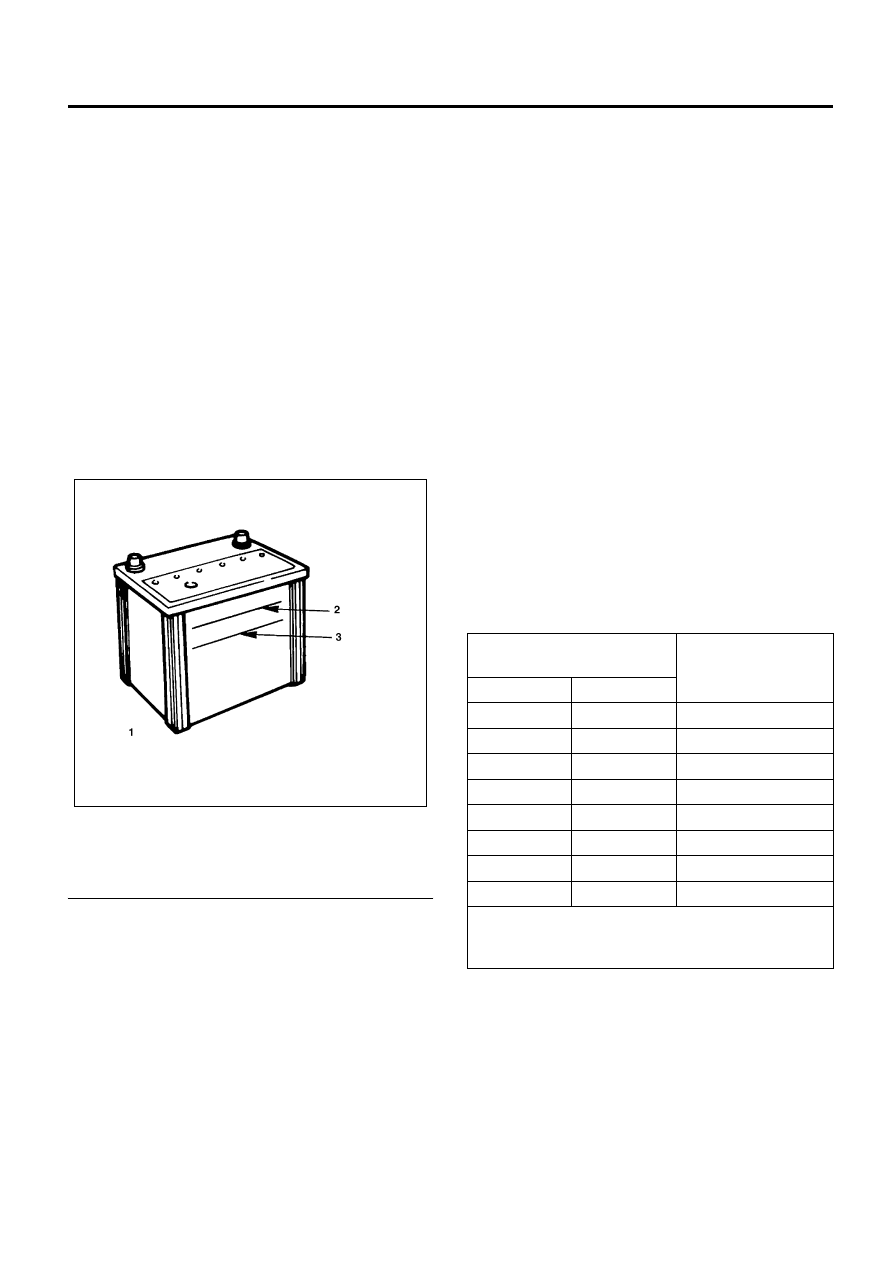Isuzu N-Series. Service manual - part 534

Engine Electrical 6D-3
Battery
General Description
There are six battery fluid caps at the top of the battery.
Diagnosis
Visual Inspection
Inspect the battery for obvious physical damage, such
as a cracked or broken case, which would permit
electrolyte loss.
Replace the battery if obvious physical damage is
discovered during inspection.
Check for any other physical damage and correct it as
necessary.
Fluid Level Check
The fluid level should be between the upper level line
and lower level line on side of the battery.
Legend
1. Battery
2. Upper Level
3. Lower Level
Voltage Check
1. Put voltmeter test leads to battery terminals.
a. VOLTAGE IS 12.4V OR ABOVE - Go to “Load
Test”.
b. VOLTAGE IS UNDER 12.4V - Go to procedure
2 below.
2. Determine fast charge amperage from
specification.
Fast charge battery for 30 minutes at amperage
rate no higher than specified value.
Take voltage and amperage readings after charge.
a. VOLTAGE IS ABOVE 16V AT BELOW 1/3 OF
AMPERAGE RATE - Replace battery.
b. VOLTAGE IS ABOVE 16V AT ABOVE 1/3 OF
AMPERAGE RATE - Drop charging voltage to
15V and charge for 10 — 15 hours.
Then go to “Load test”.
c. VOLTAGE IS BETWEEN 12V AND 16V
- Continue charging at the same rate for an
additional 3-1/2 hours. Then go to “Load test”.
d. VOLTAGE IS BELOW 12V - Replace battery.
Load Test
1. Connect a voltmeter and a battery load tester
across the battery terminals.
2. Apply 300 ampere load for 15 seconds to remove
surface charge from the battery.
Remove load.
3. Wait 15 seconds to let battery recover. Then apply
specified load from specifications (See Main Data
and Specifications in this section).
Read voltage after 15 seconds, then remove load.
1) VOLTAGE DOES NOT DROP BELOW THE
MINIMUM LISTED IN FOLLOWING TABLE
- The battery is good and should be returned to
service.
2) VOLTAGE IS LESS THAN MINIMUM LISTED
- Replace battery.
On-vehicle Service
Battery Charging
Observe the following safety precautions when charging
the battery:
1. Never attempt to charge the battery when the fluid
level is below the lower level line on the side of the
battery.
In this case, the battery must be replaced.
N6A0983E
ESTIMATED
TEMPERATURE
MINIMUM VOLTAGE
°F
°C
70
21
9.6
60
16
9.5
50
10
9.4
40
4
9.3
30
− 1
9.1
20
− 7
8.9
10
− 12
8.7
0
− 18
8.5
The battery temperature must be estimated by feel
and by the temperature the battery has been
exposed to for the preceding few hours.